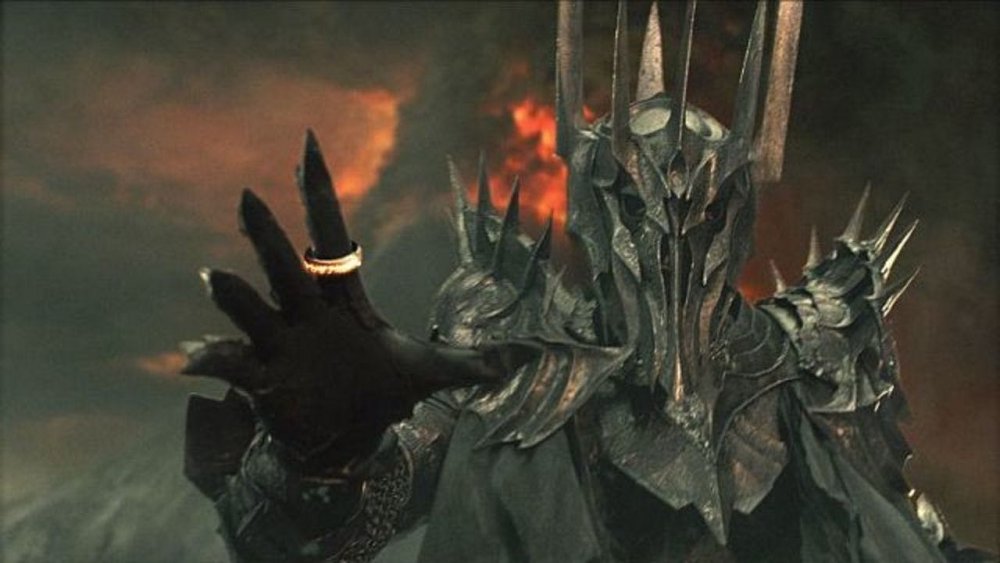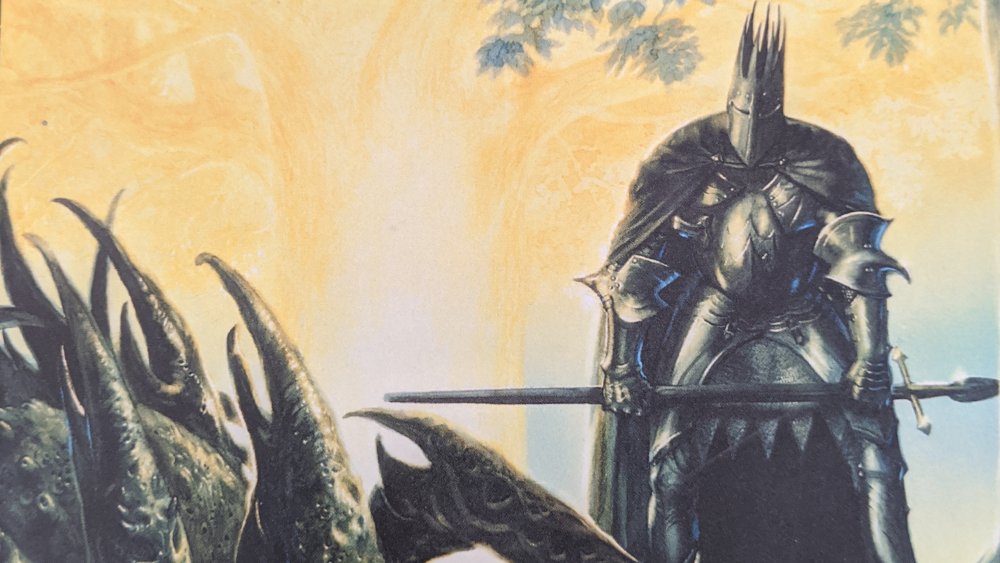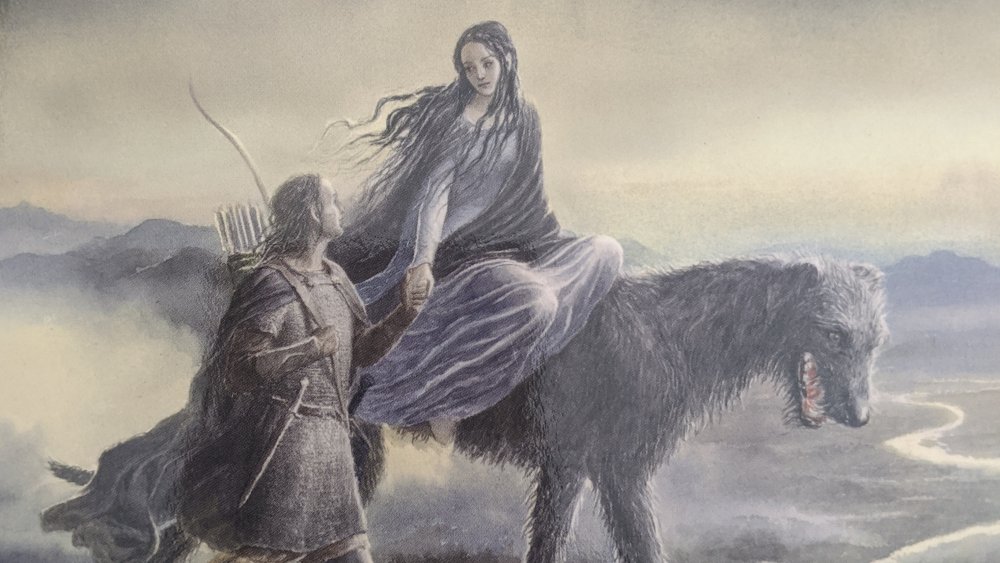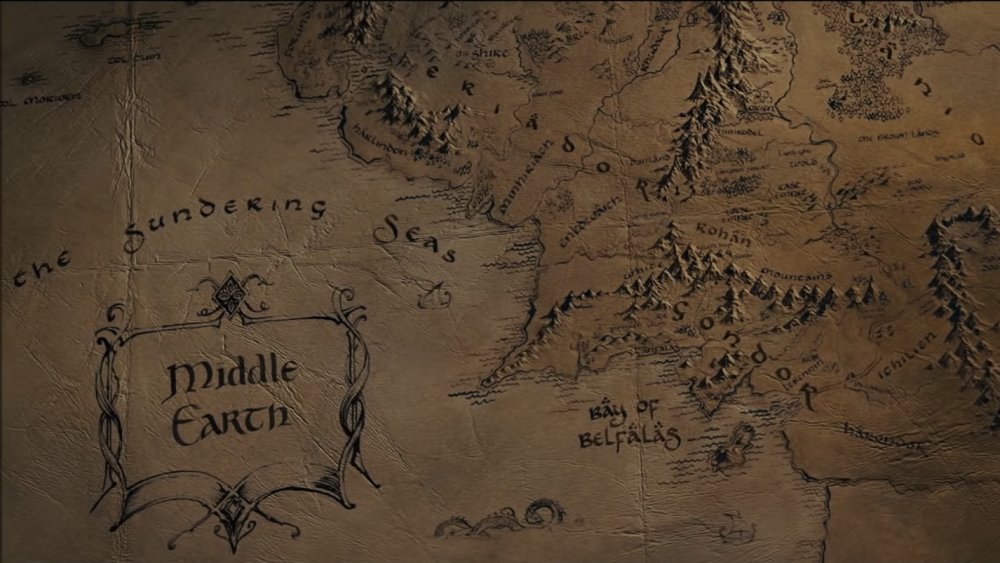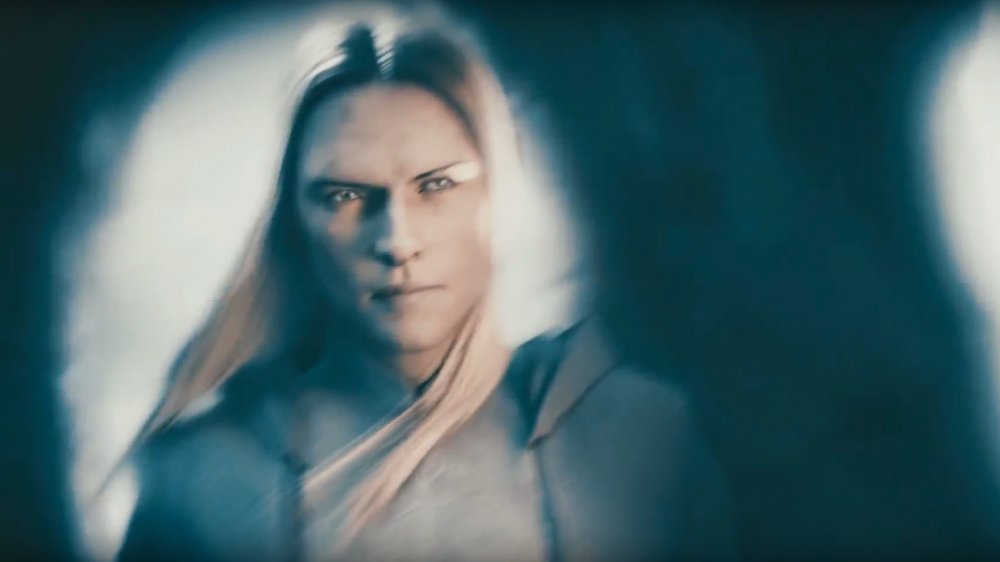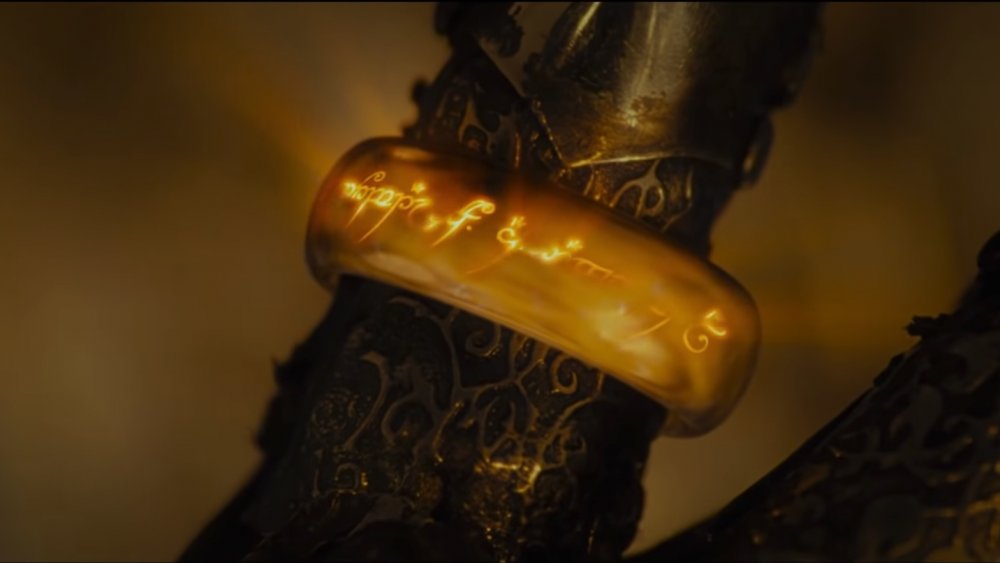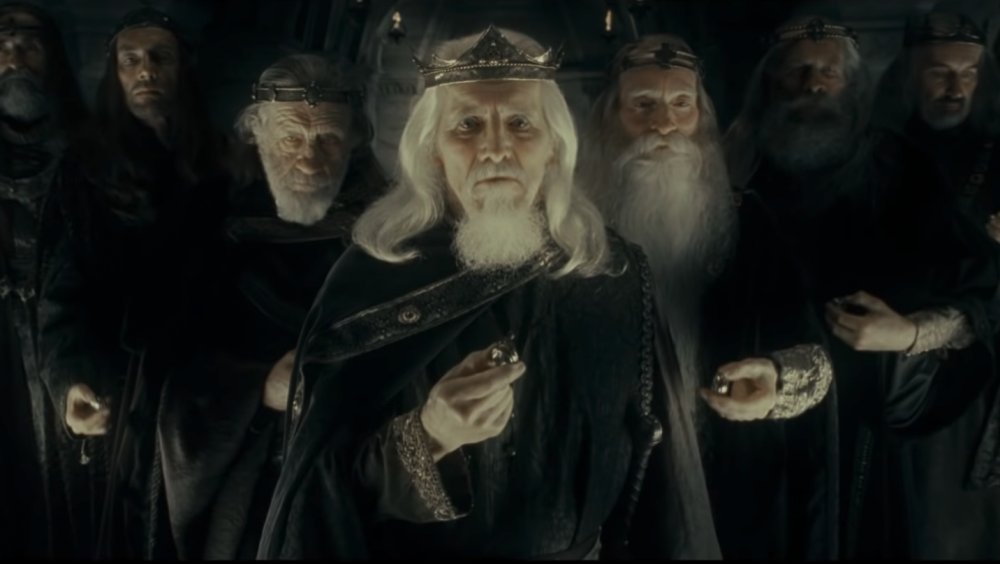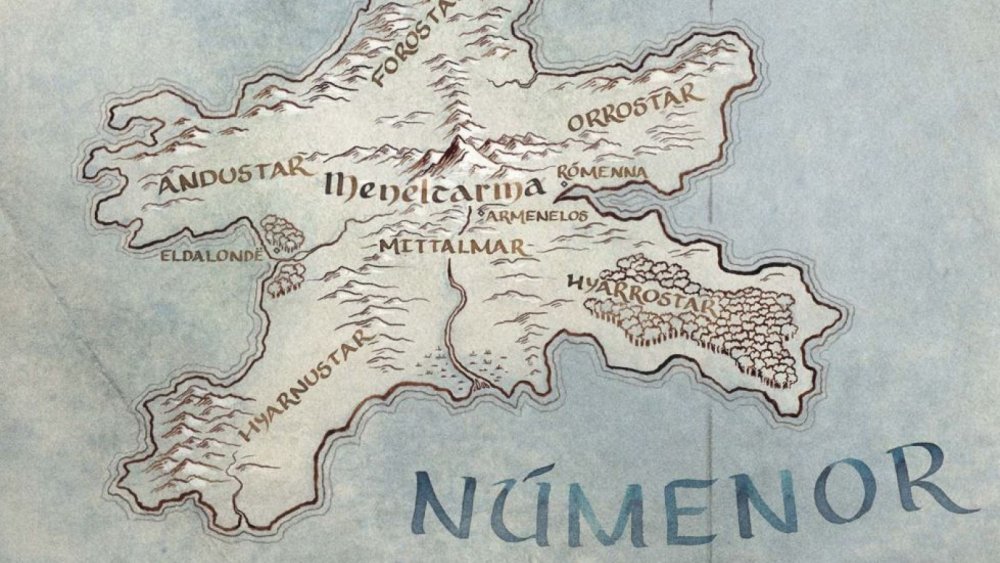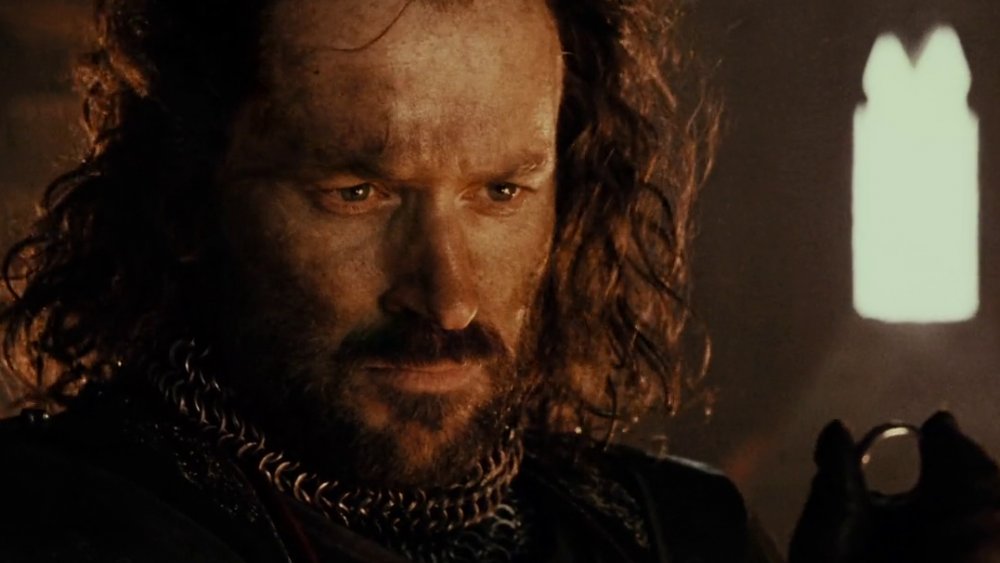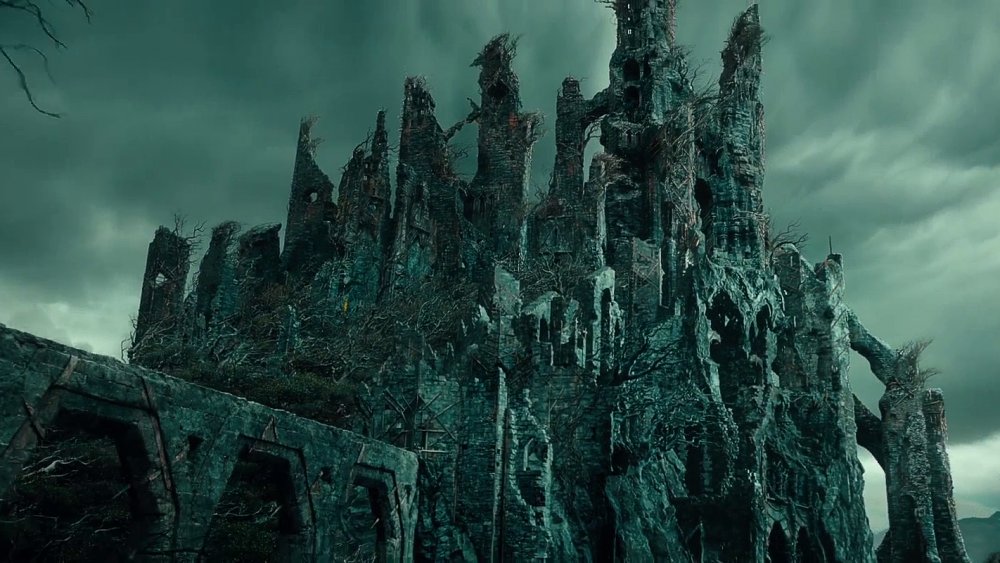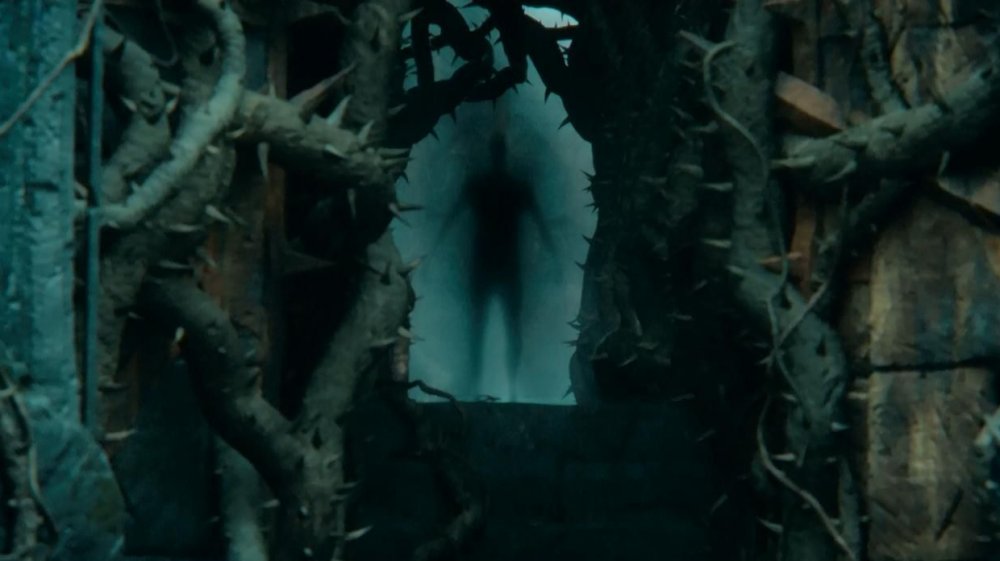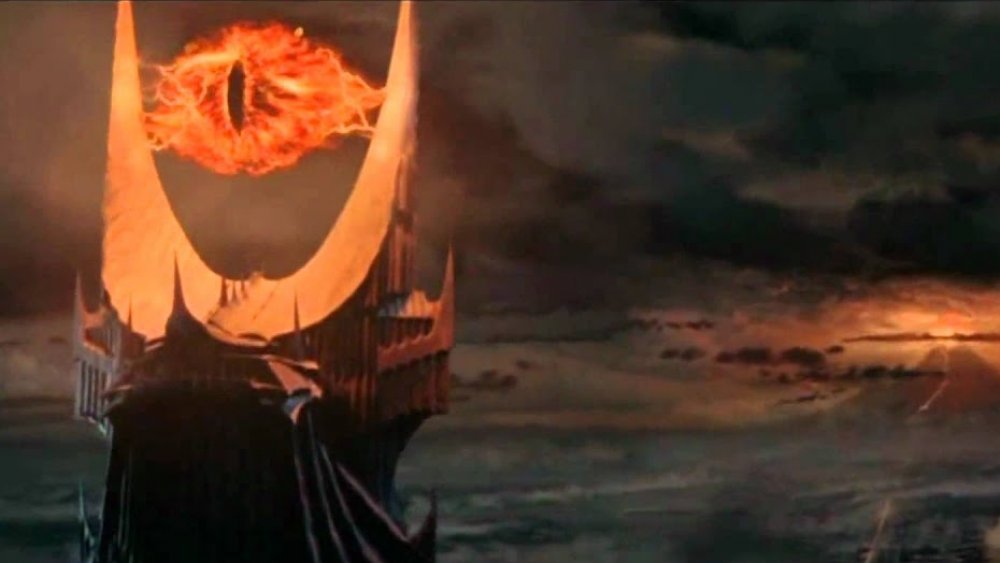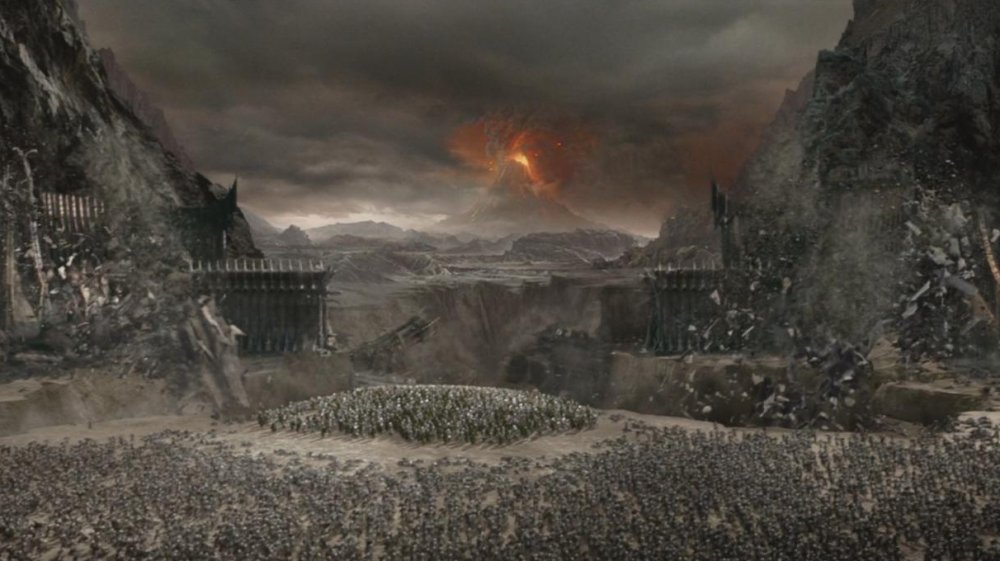Sauron's Entire Backstory Explained
Whether you're talking about the brooding Necromancer from The Hobbit, the ring-wielding warlord at the beginning of The Fellowship of the Ring, or the all-seeing fiery eye from the rest of The Lord of the Rings story, Sauron is one of the most intimidating antagonists in all of fiction.
And yet, considering the fact that he's basically the title character of J.R.R. Tolkien's entire Lord of the Rings trilogy, we don't really get much information on his origin or motivations. While the backstories of hobbits, elves, wizards, dwarves, and men are fleshed out in detail, the supreme villain of Middle-earth is largely left in the shadows.
Sure, we find out quite a bit about his Ring — which is intimately connected to his own power — but what about the Dark Lord himself? Why is this autocratic metaphysical being attempting to dominate Middle-earth? Where did he come from in the first place? How did he end up looking like a fiery optical organ perched atop a tower in Mordor? To properly answer those questions, we'll need to back up to the very beginning of Sauron's ages-long story.
Mairon
The spirit that everyone comes to know and loathe as Sauron the Dark Lord actually came into being before the beginning of time itself.
Before the world is created, the supreme being of Tolkien's mythology, Ilúvatar, creates a group of angelic creatures known as the Ainur. While he ultimately invites the Ainur — including Sauron — to literally sing the universe into existence with him, the part that particularly matters to us here is the fact that once everything is created, many of these spirits decide to enter into the world, where they become the stewards and shapers of the earth.
Fourteen of these Ainur become the Valar, the godlike leaders of the universe. The rest of the Ainur become known as the Maiar, lesser, yet still very powerful spirits. Gandalf is a Maiar, as is Saruman, Radagast, and Sauron. In these early days, Sauron is called Mairon. He is a good, powerful spirit that follows the master craftsman of the Valar, Aulë, and he establishes a reputation as a lover of order. He helps to plan out the establishing world with the greatest efficiency and does everything he can to eliminate confusion as he goes along. That's right — in the beginning, Sauron is opposed to chaos.
Breaking bad
While Sauron starts out with an agenda to organize and coordinate the new world for the betterment of the creatures that live within it, over time he becomes obsessed with the plans and actions of organizing in and of themselves — regardless of who they impact. This obsession is likely what first attracts him to Morgoth, the first and greatest Dark Lord.
Morgoth is the primary antagonist for the bulk of Tolkien's epic The Silmarillion. From the very beginning, he does his best to pervert creation and subvert its rulers. In the early days, likely during the events known as the First War, Morgoth goes to war with the Valar and seduces many Maiar, including Sauron, to join his nefarious purposes. Once turned, it doesn't take long before Sauron rises up the demonic ranks. He becomes known as Gorthaur the Cruel and serves as Morgoth's second in command.
While Sauron starts off good and then goes south, it's important to point out that when he does break bad, it's the real deal. In The Silmarillion, Tolkien takes care to point out that, once turned, Sauron was "only less evil than his master in that for long he served another and not himself." However, an important distinction should be made: While Morgoth wishes to literally corrupt and undo the world, Sauron's ambitions are more focused on controlling and ruling it.
The First Age
Most of The Lord of the Rings and The Hobbit take place at the end of the Third Age of Middle-earth history. However, Sauron is quite busy during the two ages that precede it. After all of the early creation and world-building stuff wraps up, the First Age kicks off, and it includes a series of epic wars between the elves and Morgoth.
Throughout these wars, Sauron has his hands full as the chief lieutenant of his dark master. At one point, when Morgoth leaves on an important side quest, he even runs the war against the elves and scores several important victories. In The Silmarillion, Tolkien describes the Sauron of the First Age as "a sorcerer of dreadful power, master of shadows and of phantoms," he goes on to say that he was the "lord of werewolves" and his "dominion was torment." Talk about a nasty rap sheet.
Eventually, he sets up shop in a watchtower called the Isle of Werewolves where he comes into contact with one of Tolkien's most famous First Age epics, the story of Beren and Lúthien. He gets caught up in a prideful duel with Huan, the companion of the lovers and the greatest hound to ever live, and loses. He shows off some shape-shifting skills as he tries to escape the canine's powerful jaws but isn't able to get away until he surrenders his isle to the Elvish princess Lúthien.
Hibernation
After his duel with Huan, Sauron slinks into a minor role and does little else worth mentioning until the Second Age rolls around. The First Age ends in the catastrophic War of Wrath in which Morgoth is utterly defeated and banished into the Timeless Void. At this point, Sauron is so dismayed by the destruction of his master that he actually repents of his evil ways and tries to smooth things over with Eönwë, the messenger of the Valar present in Middle-earth at the end of the war.
He puts on a handsome physical appearance — because the angelic spirits in Tolkien's world can do that kind of thing — and tells Eönwë that he's sorry. However, Eönwë is simply a messenger and lacks the power to pardon, so he orders the humbled traitor to come back with him to the Blessed Realm far away in the western parts of the world, where he will be judged by the Valar themselves.
At this point, Sauron is accustomed to being in charge of things. The thought of possibly being punished for his heinous acts spooks him, and he flees further into Middle-earth, where he hides for the next five centuries. As men and elves begin to settle down and the Second Age begins in earnest, Sauron stays on the sidelines, waiting for his chance.
Annatar
In the Appendix of The Return of the King, it says that after 500 years, Sauron realizes that the Valar are still far away in the Blessed Realm and aren't a concern. The nearby elves and men in Middle-earth, though, are getting powerful, so he sets up shop in Mordor, which becomes one of his main strongholds for the rest of his career.
This time around, Sauron decides to take a different approach than the brute force model that failed his previous master, this time opting for a subtler method. He puts on an attractive physical appearance again and calls himself Annatar, the Lord of Gifts. Under this disguise, he visits the Elves and presents himself as a friend who can share his deep knowledge with them.
He carries on with this play acting for the next few centuries, during which time he becomes befriends an elven lord named Celebrimbor. Celebrimbor is an incredible craftsman, and with Sauron — er, Annatar — by his side, he begins forging rings of power. Those rings of power. The pair forge many lesser rings, along with the ones that become the nine rings for mortal men and the seven for the dwarf lords. Critically, though, Celebrimbor forges the three great elven rings after Sauron leaves to secretly head back to Mordor for a little side project...
The One Ring and War
Back in Mordor, Sauron begins forging a single great ring. He pours a ton of his power into this One Ring in an attempt to use it to control those who wear the others. However, as soon as he puts it on, those who are wearing the elven rings — which Sauron never touched — are immediately alerted to the danger and hide their powerful jewelry.
Furious at his failed attempt to manipulate the elves, Sauron decides to opt for plan B: gathering an army and crushing the elves without pity. In the following war, he kills Celebrimbor, destroys his kingdom, and captures most of the rings of power. To his great chagrin, though, he doesn't find the three elven rings, which had been shipped off to hidden owners once the elven lords were aware of the threat of the One Ring.
Eventually, Sauron pushes the elves all the way back against the western coasts of Middle-earth. However, just when it seems that he's about to completely destroy his enemies, an army of men arrives on the scene. They're known as the Númenóreans, and they live on an island west of Middle-earth. In fact, these Númenóreans are descended from the same Beren and Lúthien that Sauron tangled with during the First Age. They join forces with the elves and bring his invasion to a grinding halt.
The Dark Lord
While the arrival of the Númenóreans saves the elven kingdoms of Middle-earth from ruin, it doesn't change the fact that at this point — that is, a little over halfway through the Second Age — Sauron is the top dog on the continent of Middle-earth. His armies have conquered practically everything in sight, he has nearly all of the rings (including the One Ring), and his home base of Mordor is secure.
The centuries that follow are known as the "Black Years." While Sauron's trajectory is ridiculously long, this has to be one of his highest points. He distributes the rings of power, creating the Nazgûl (the Black Riders from The Lord of the Rings) in the process, and continues to conquer the kingdoms of men that lie off to the east and south of the Middle-earth map we're all used to.
Sauron eventually gets a little carried away by his success and decides to award himself the lofty title "King of Men." The moniker makes sense on the surface. After all, he's viewed as a living god and master by nearly every one of the kingdoms of men by now — barring one terribly important exception: the Númenóreans. Living in comfortable safety out on their island, when the Númenóreans hear the self-aggrandizing title, it doesn't sit well with them, and they decide to put this upstart on the mainland in his place.
Humbled but not broken
Not long after Sauron calls himself the King of Men, a massive army of Númenóreans shows up on the shores of Middle-earth, led by their proud king Ar-Pharazôn. This army is so imposing that Sauron's own servants abandon him. Left alone, the Dark Lord decides to make a bold move. Rather than flee into hiding once again, he surrenders to his enemies, who take him back to their island nation.
At this point, Sauron can still maintain an attractive outer physical form when he wants to, and he still looks pretty good, even as he arrives in Númenor in chains. It doesn't take long before the conniving Maiar weasels his way up from prisoner to a bona fide counselor of the king himself. From that position, he corrupts the local inhabitants and introduces them to the worship of Morgoth and human sacrifices.
Eventually, he convinces the king that if he attacks the Valar in the forbidden Blessed Realm to the west, they can somehow gain immortality. While the plan is fairly short-sighted, the men recklessly sail off with visions of never-ending life. At this point, Ilúvatar himself sinks both the rebellious fleet of ships and the recalcitrant island under the waves of the ocean. Sauron is caught in the catastrophe and loses his physical body, fleeing back to Middle-earth as an incorporeal spirit.
The Last Alliance
Back in Middle-earth, Sauron, weakened by his activities and the forging of the One Ring, is finally forced to put on a less attractive form, donning an imposing, brutish physique. He begins to gather his servants back to his command.
Not long after this, a group of Númenóreans that survived the Atlantis-like destruction of their home arrives on the shores of Middle-earth and begins setting up two joint kingdoms: Gondor and Arnor. By now, Sauron absolutely hates these guys, so he begins harassing them as soon as possible. The Númenórean exiles respond by forming the Last Alliance of Elves and Men.
This epic confederation, which gets some screen time in the opening sequence of The Fellowship of the Ring, attacks Mordor and eventually defeats Sauron. The armies of the Alliance are led by several imposing warriors, including Elrond and Isildur, who ultimately cuts the One Ring from Sauron's hand and takes it for himself.
Staying hidden
After being defeated and losing his ring, the weakened spirit of Sauron goes into hiding yet again, this time for a very, very long time. It isn't until roughly a millennium into the Third Age, which begins right after the war of the Last Alliance, that rumors of the Dark Lord begin to swirl once again.
However, this time Sauron, having clearly learned his lesson about using brute force against the Númenóreans, doesn't reappear in the open, choosing instead to pull strings from behind the scenes. Initially, an anonymous shadowy gloom arrives out of the east and settles on an area of northeastern Middle-earth called Greenwood the Great — which starts to be called Mirkwood at this point (yes, that Mirkwood). While many people think it's one of the Black Riders, it slowly becomes clear that a greater power is at work.
Over the centuries that follow, the Free Peoples of the world begin to notice that a single mind and purpose seems to be orchestrating the various activities of their enemies. Previously disjointed or scattered opponents suddenly unify and make concerted attacks against the kingdoms of the Númenórean exiles in particular, wearing Gondor down and leaving Arnor in ruins.
The Necromancer
A thousand years before The Lord of the Rings takes place, Gandalf the wizard heads to Sauron's fortress in Mirkwood, called Dol Guldur, and Sauron flees before he's discovered. He spends the next four centuries in the East before he finally returns to Dol Guldur even stronger. Not long afterward, a hobbit-like creature named Smeagol kills his friend and steals a magic ring he found before he vanishes into the Misty Mountains, unbeknownst to its master.
At this point, Sauron becomes known as the Necromancer — the same ghostly presence that fans met in the Hobbit trilogy. The next few centuries creep by as Sauron continues to gather his strength and begins searching for the Ring. Eventually, the White Council (including Gandalf, Elrond, Galadriel, and Saruman) gets wise to his identity and attacks Dol Guldur, driving him out of Mirkwood.
However, by this point, Sauron is ready to leave anyway, and he takes the opportunity to finally relocate back to Mordor, where the Black Riders have been preparing things for his return. A decade later he finally comes out of hiding and openly declares his return. It's also around this time that, due to his inability to take an attractive form anymore, he begins styling himself as an evil, lidless eye of fire.
The Eye of Sauron
A half a century after Sauron returns to Mordor, Bilbo Baggins has his 111th birthday party and bequeaths the Ring to his nephew Frodo. At this point, Sauron redoubles his hunt for the Ring while he continues making plans to subdue his enemies by force, Ring or not.
The War of the Ring that follows looks like it's all going his way at first. Eventually, though, Aragorn pops up on the scene, to Sauron's dismay — after all, he's a powerful Númenórean monarch in exile and a direct descendant of Beren and Lúthien. Along with the returned king, Gandalf the wizard steps into a major leadership role and begins managing the collaborative efforts of the Free Peoples of Middle-earth. He orchestrates their collective resistance to Sauron all in a bid to buy time for Frodo and Sam to reach the Cracks of Doom and destroy the Ring — which they do, catching Sauron by surprise and utterly defeating him.
Sauron's final defeat
For Sauron, the destruction of the One Ring represents the final undoing of his material power. He had poured so much of his being into the shiny trinket that when it is destroyed, the Dark Lord is no longer able to maintain a corporeal presence — attractive, ugly, or otherwise. In The Return of the King, in the moments after the Ring is destroyed, it literally says, "There rose a huge shape of shadow, impenetrable, lightning-crowned, filling all the sky... terrible but impotent: for... a great wind took it, and it was all blown away, and passed; and then a hush fell."
Sauron doesn't literally die in a mortal sense, but his physical presence is undone and his spiritual being is no longer able to disturb those living in Middle-earth. While he doesn't give a blow by blow description of Sauron's end, in The Silmarillion, Tolkien does condense Sauron's career into a single line, saying that "In after years [Sauron] rose like a shadow of Morgoth and a ghost of his malice, and walked behind him on the same ruinous path down into the Void," indicating that Sauron likely ended up in the same timeless vacuum as his former master.
